Abstract
A revival of interest in Haldane's equilibrium theory for X-linked lethals has been stimulated by the introduction of accurate tests for the detection of female heterozygotes in Lesch-Nyhan disease. Application of these tests appears to indicate an excess of familial cases. This excess can be attributed to ascertainment bias, a difference in female and male mutation rates, genetic drift, and reproductive compensation. Reproductive compensation will be particularly effective in increasing the proportion of familial cases if (1) birth control is widespread; (2) selection against affected males acts in utero; (3) affected sons show symptoms at an early age; and (4) sons are more highly valued than daughters. We demonstrate how only a few generations of reproductive compensation are sufficient to achieve an approximate equilibrium between selection and mutation showing a high proportion of familial cases. We also discuss the random fluctuations around equilibrium caused by genetic drift.
Full text
PDF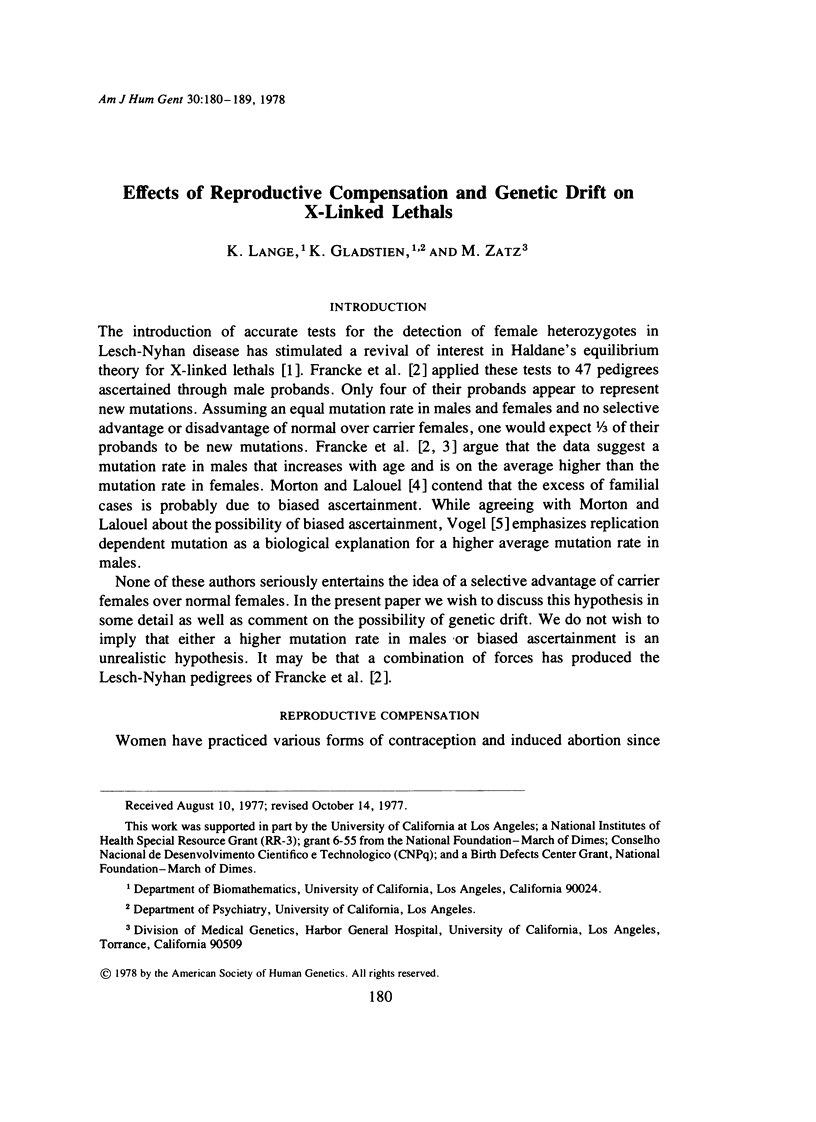
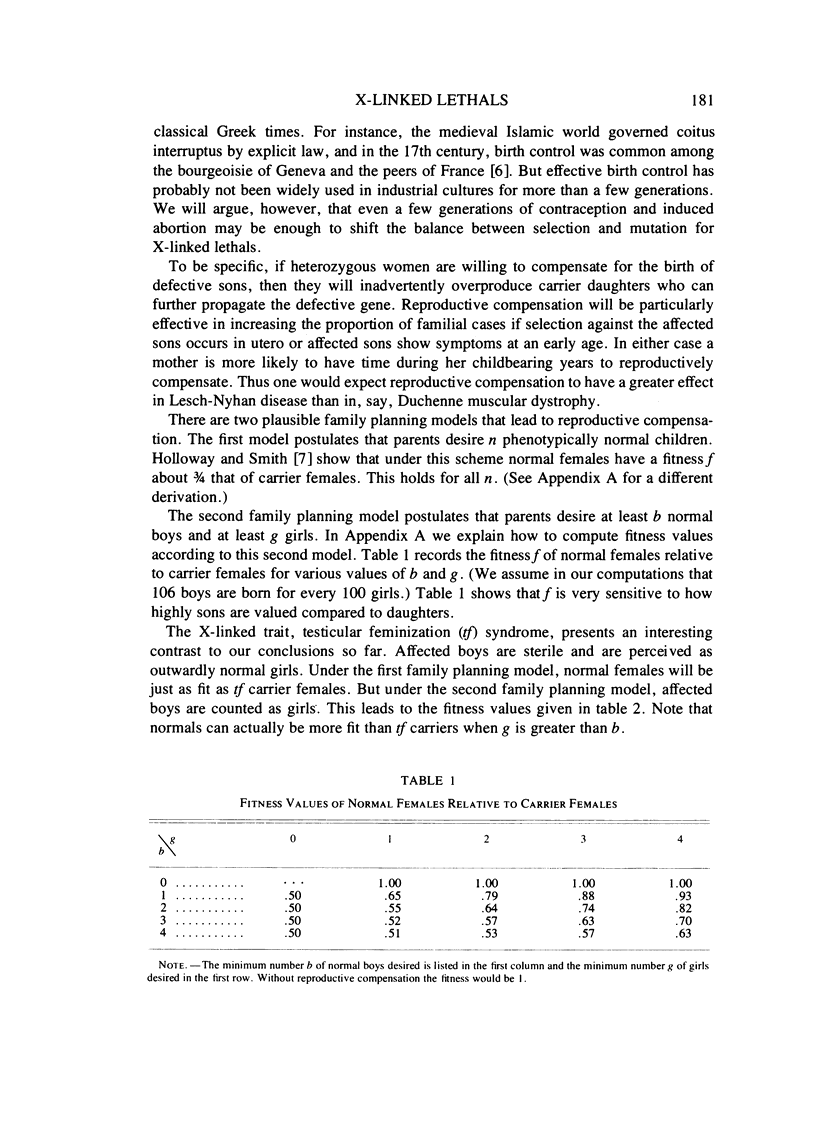
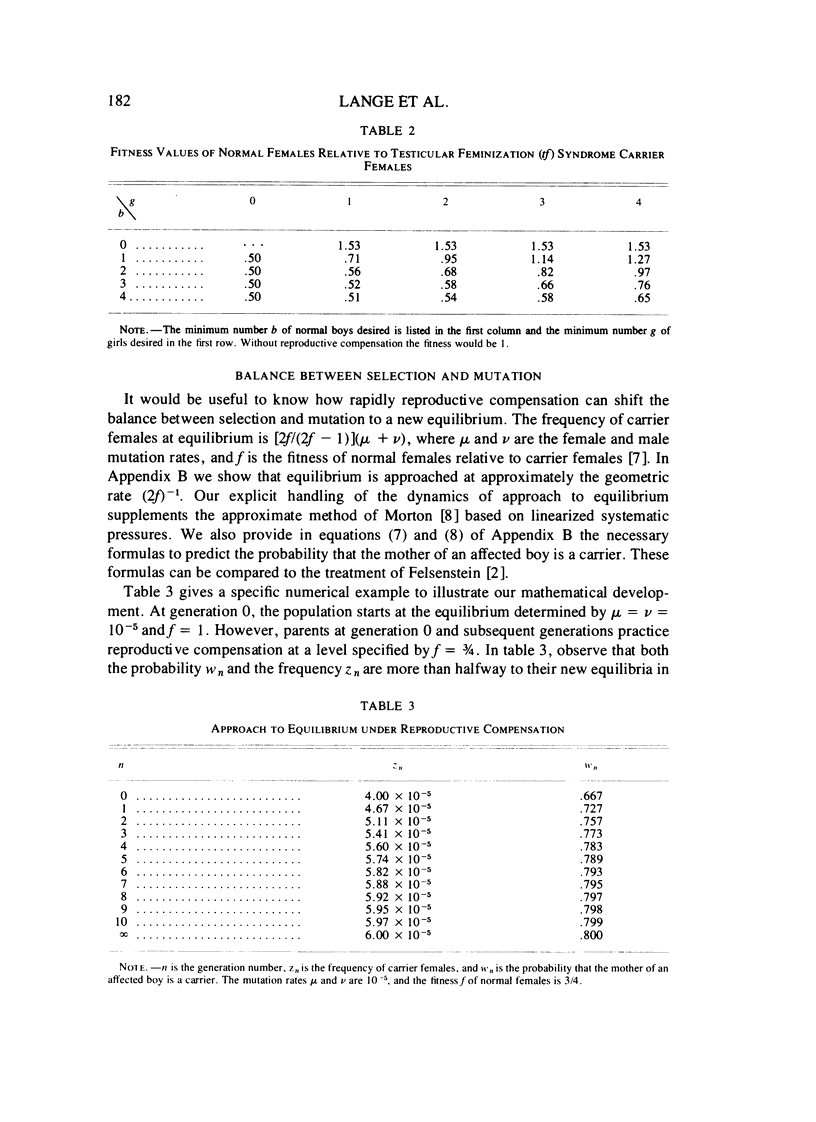
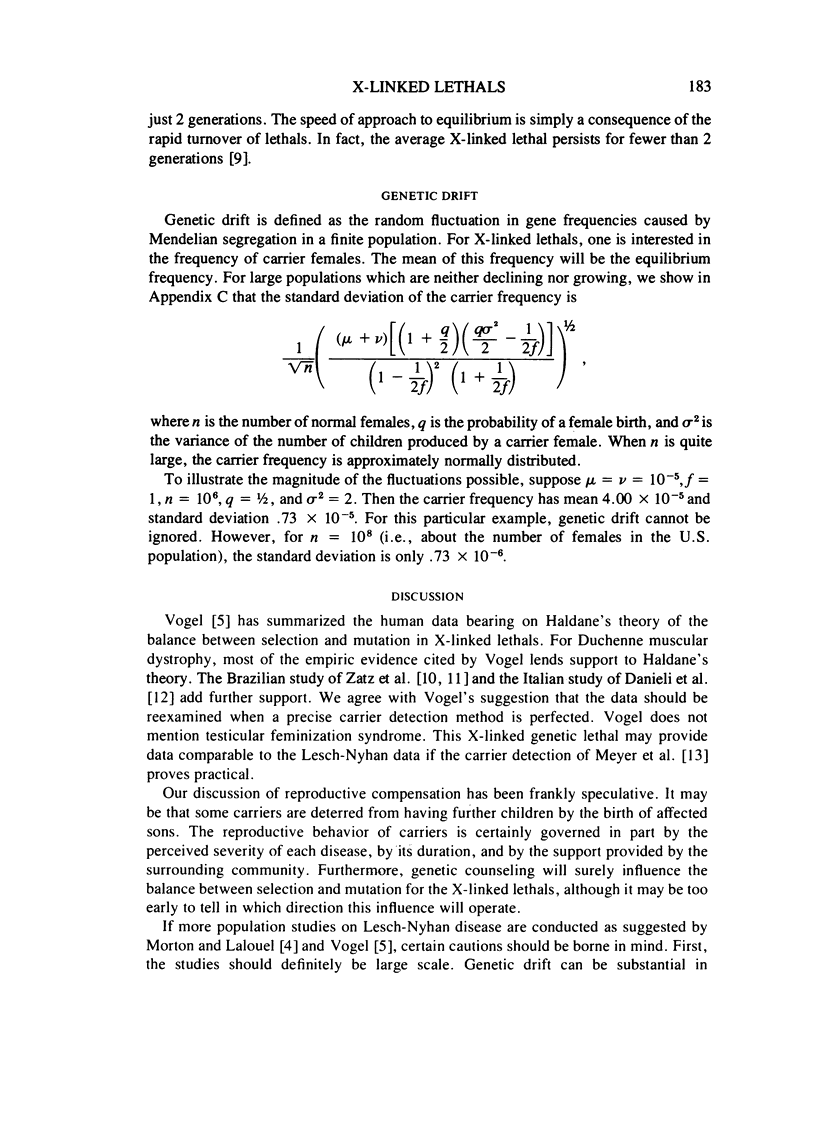
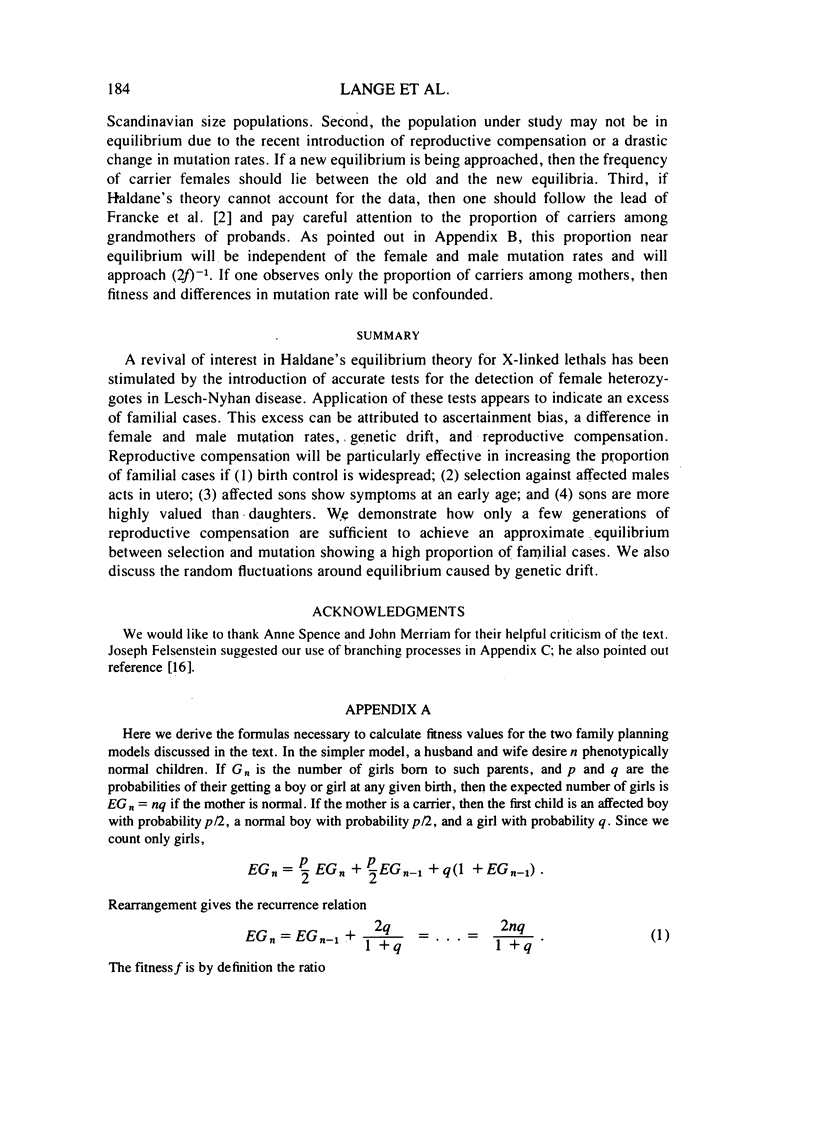

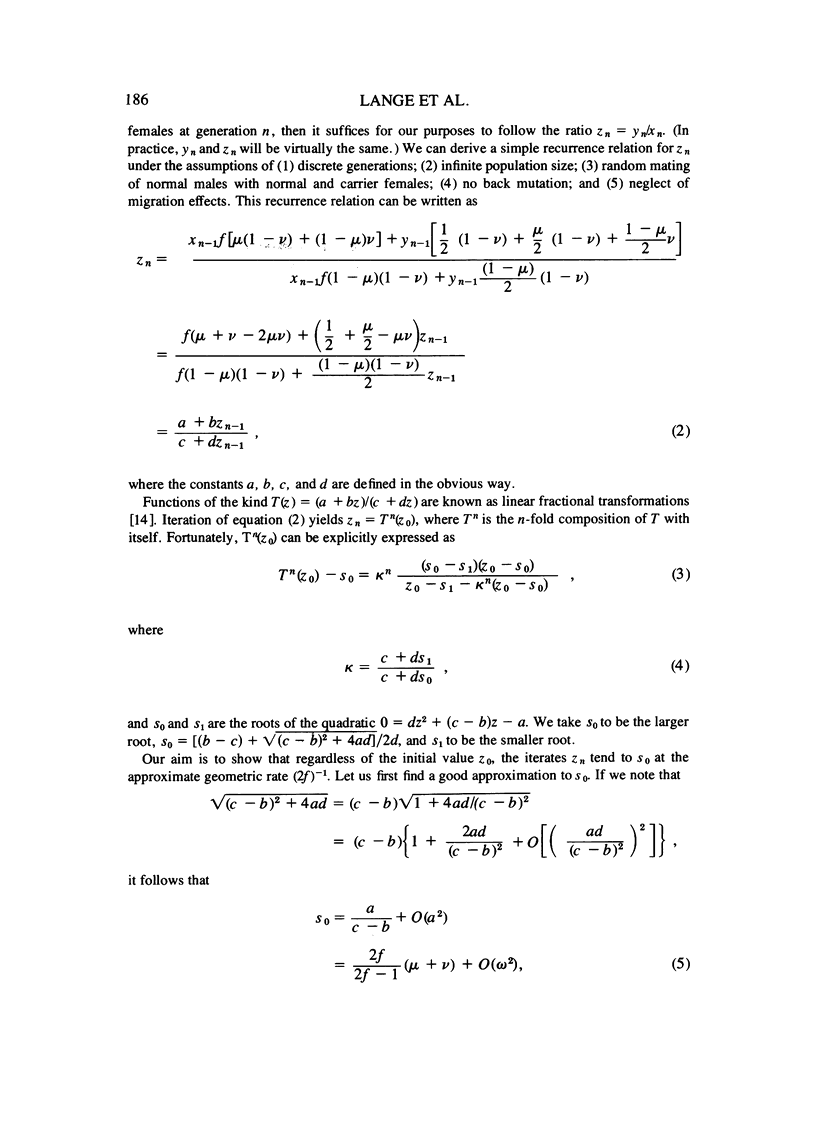
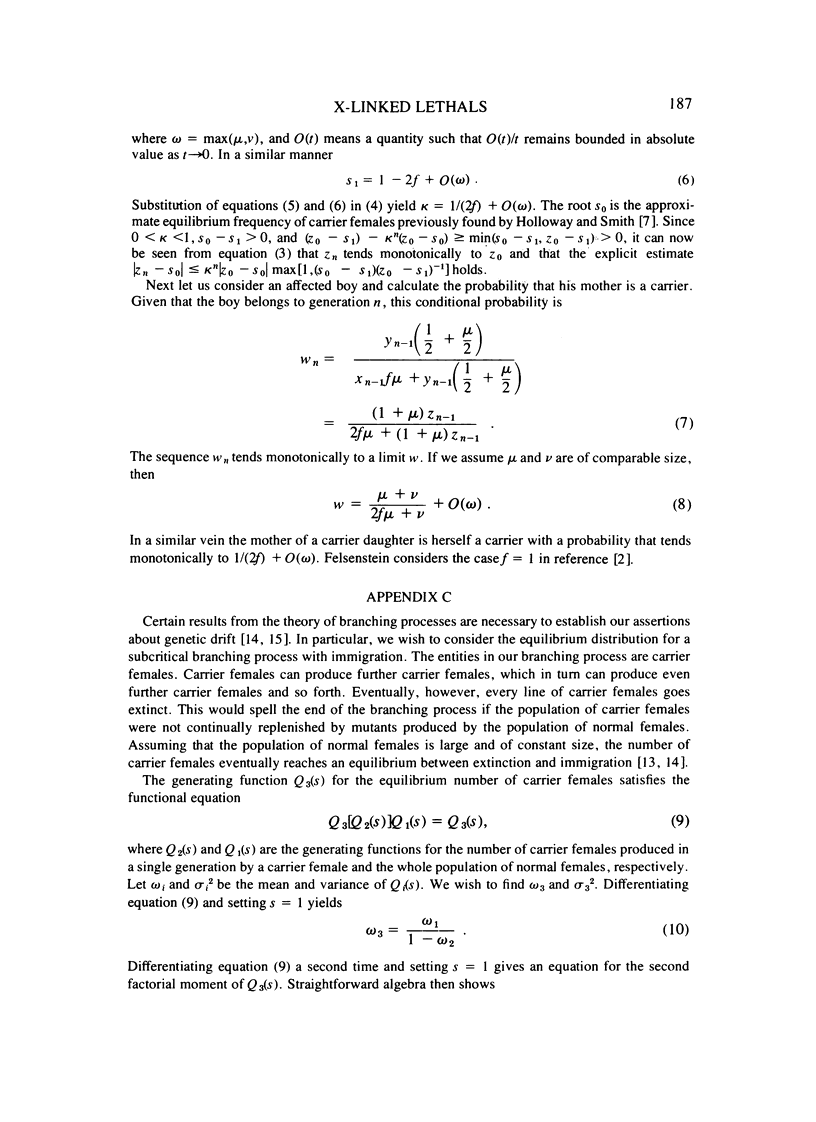
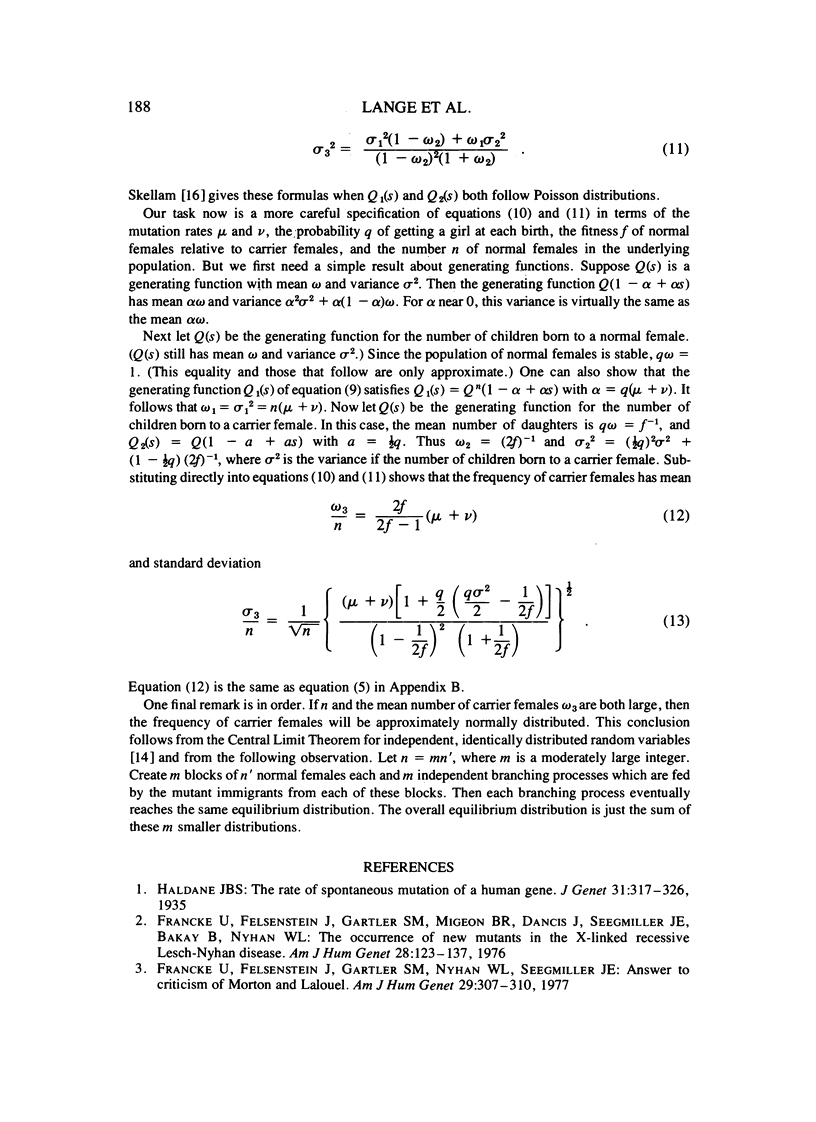
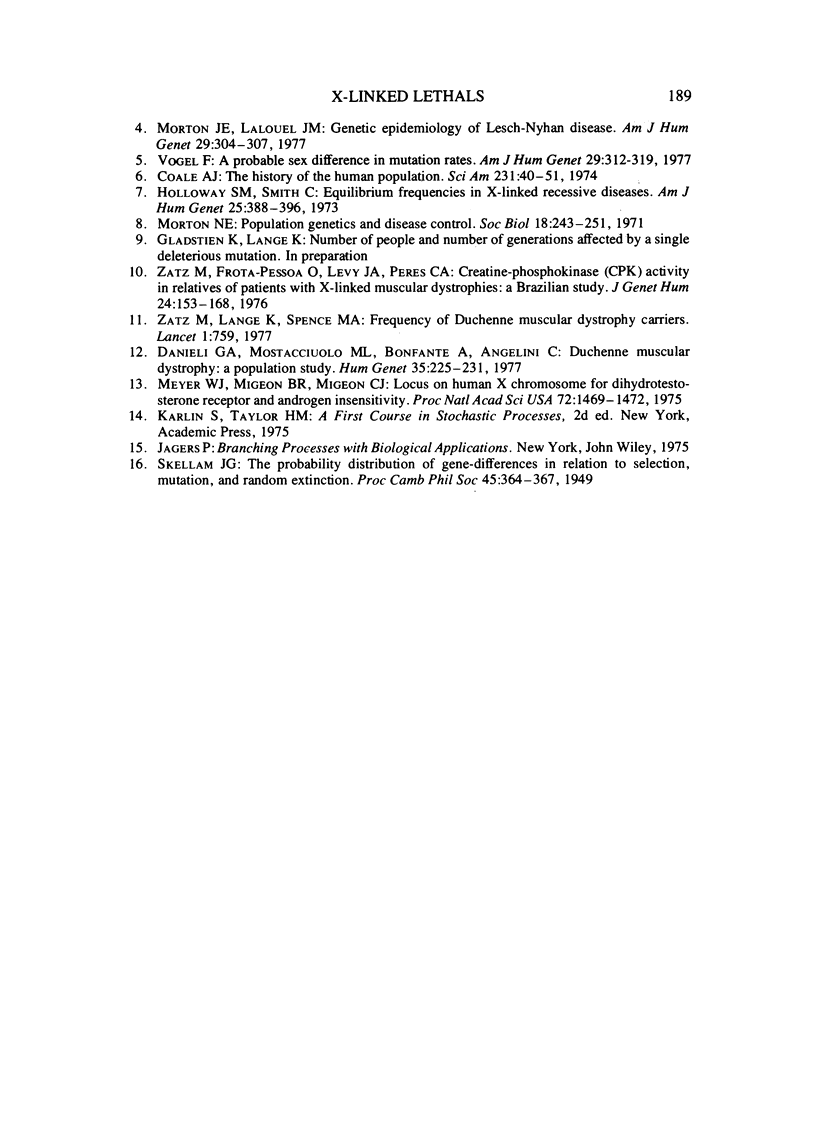
Selected References
These references are in PubMed. This may not be the complete list of references from this article.
- Coale A. J. The history of the human population. Sci Am. 1974 Sep;231(3):40–51. doi: 10.1038/scientificamerican0974-40. [DOI] [PubMed] [Google Scholar]
- Danieli G. A., Mostacciuolo M. L., Bonfante A., Angelini C. Duchenne muscular dystrophy. A population study. Hum Genet. 1977 Feb 11;35(2):225–231. doi: 10.1007/BF00393974. [DOI] [PubMed] [Google Scholar]
- Francke U., Felsenstein J., Gartler S. M., Migeon B. R., Dancis J., Seegmiller J. E., Bakay F., Nyhan W. L. The occurrence of new mutants in the X-linked recessive Lesch-Nyhan disease. Am J Hum Genet. 1976 Mar;28(2):123–137. [PMC free article] [PubMed] [Google Scholar]
- Francke U., Felsenstein J., Gartler S. M., Nyhan W. L., Seegmiller J. E. Answer to criticism of Morton and Lalouel. Am J Hum Genet. 1977 May;29(3):307–311. [PMC free article] [PubMed] [Google Scholar]
- Holloway S. M., Smith C. Equilibrium frequencies in X-linked recessive disease. Am J Hum Genet. 1973 Jul;25(4):388–396. [PMC free article] [PubMed] [Google Scholar]
- Meyer W. J., 3rd, Migeon B. R., Migeon C. J. Locus on human X chromosome for dihydrotestosterone receptor and androgen insensitivity. Proc Natl Acad Sci U S A. 1975 Apr;72(4):1469–1472. doi: 10.1073/pnas.72.4.1469. [DOI] [PMC free article] [PubMed] [Google Scholar]
- Morton N. E., Lalouel J. M. Genetic epidemiology of Lesch-Nyhan disease. Am J Hum Genet. 1977 May;29(3):304–311. [PMC free article] [PubMed] [Google Scholar]
- Morton N. E. Population genetics and disease control. Soc Biol. 1971 Sep;18(3):243–251. doi: 10.1080/19485565.1971.9987926. [DOI] [PubMed] [Google Scholar]
- Vogel F. A probable sex difference in some mutation rates. Am J Hum Genet. 1977 May;29(3):312–319. [PMC free article] [PubMed] [Google Scholar]
- Zatz M., Frota-Pessoa O., Levy J. A., Peres C. A. Creatine-phosphokinase (CPK) activity in relatives of patients with X-linked muscular dystrophies: a Brazilian study. J Genet Hum. 1976 Jun;24(2):153–168. [PubMed] [Google Scholar]
- Zatz M., Lange K., Spence M. A. Frequency of Duchenne muscular dystrophy carriers. Lancet. 1977 Apr 2;1(8014):759–759. doi: 10.1016/s0140-6736(77)92211-5. [DOI] [PubMed] [Google Scholar]


